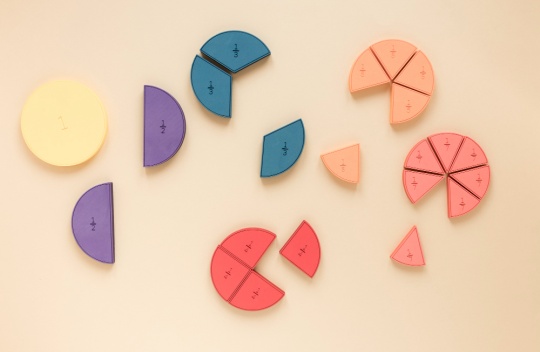Percentage Calculator
An online percentage calculator is an invaluable tool for quickly and accurately performing percentage calculations. Whether you're a student, professional, or simply someone who needs to work with percentages in daily life, this calculator can save you time and ensure precision in your calculations.
Understanding Percentages
A percentage is a way of expressing a number as a fraction of 100. It is denoted by the symbol "%". For example, 50% means 50 out of 100, or half of a whole. Percentages provide a standardized method of expressing proportions, making it easier to compare different quantities [1].
There are several types of percentage calculations that you might encounter:
1. Calculating a percentage of a number: This involves finding what a certain percentage of a given number is. For example, calculating 15% of 80.
(Percentage / 100) × Number = Result
2.Percentage Increase/Decrease: This determines how much a value has changed proportionally. For example, if a price increases from $50 to $60, what is the percentage increase?
((New Value - Original Value) / Original Value) × 100 = Percentage Change
3. Percentage of a Percentage:Finding a percentage of another percentage.
(Percentage A / 100) x (Percentage B / 100) x 100 = Total Percentage
4. Reverse Percentage: This "reverses" a percentage change to find the starting value. For example, if a 20% increase resulted in a value of 180, what was the original value?
INCREASE: Current Amount / (1 + (Percentage / 100)) = Original Amount
DECREASE: Current Amount / (1 - (Percentage / 100)) = Original Amount
5. Percentage Difference: Comparing two values and expressing the difference as a percentage [2].
(A / B) × 100 = Percentage
Practical Applications of Percentages
Percentages play a crucial role in various aspects of daily life, from financial decisions to academic assessments. In finance and business, they are used to calculate discounts, taxes, interest rates, and profit margins. For instance, a 20% discount on a $100 item would result in a final price of $80. In education, percentages are commonly used for grading, with a student scoring 85 out of 100 on a test receiving a grade of 85%. Other practical applications include:
Health and nutrition: Calculating body fat percentage or analyzing nutritional information on food labels. A person weighing 150 lbs with 30 lbs of body fat has a body fat percentage of 20%.
Statistics and data analysis: Measuring population growth rates or interpreting survey results. In a survey, 75 out of 100 respondents prefer product A over product B, indicating a 75% preference for product A [3].
Marketing: Determining conversion rates, market shares, and sales growth.
Personal finance:Comparing investment returns, calculating loan interest, or budgeting expenses as a percentage of income.
These diverse applications demonstrate the versatility and importance of percentage calculations in everyday life and professional settings.
Common Mistakes When Calculating Percentages
1. Confusing Percentage Points and Percentages: A change from 10% to 15% is a 5 percentage point increase, but a 50% increase.
2. Incorrect Order of Operations: When calculating percentage increases or decreases, it's important to perform operations in the correct order.
3. Forgetting to Convert Percentages to Decimals: When multiplying by a percentage, remember to convert it to a decimal first (e.g., 20% = 0.20).
4. Misunderstanding Percentage Change: A 100% increase doubles the original value, while a 100% decrease reduces it to zero [4].
Tips for Calculating Percentages Easily
1. Using Mental Math Shortcuts
- 10% is moving the decimal point one place left
- 20% is double 10%
- 25% is one-quarter
- 50% is half [5]
2. Learn Common Percentage-Fraction Equivalents: For example, 50% = 1/2, 25% = 1/4, 20% = 1/5
3. Use the "10% Method":To calculate 10% of a number, simply move the decimal point one place to the left. For example, 10% of 80 is 8.
4. Break Down Complex Percentages: To find 15%, calculate 10% and add half of that (5%).
5. Use Mental Math Shortcuts: For example, to calculate 20%, find 10% and double it [6].
How to Use an Online Percentage Calculator
An online percentage calculator simplifies the process of performing percentage calculations. Here's how to use it effectively:
1. Identify the Type of Calculation: Determine whether you need to find a percentage of a number, calculate a percentage increase/decrease, or perform another type of percentage calculation.
2. Enter the Values: Input the known values into the appropriate fields of the calculator.
3. Select the Operation: Choose the type of calculation you want to perform from the available options.
4. Click Calculate:Press the calculate button to obtain your result.
5. Interpret the Result:Understand what the calculated percentage means in the context of your problem.
Understanding percentages and how to calculate them is crucial in many aspects of life, from personal finance to professional decision-making. An online percentage calculator is a powerful tool that can help you perform these calculations quickly and accurately. By familiarizing yourself with the different types of percentage calculations, common applications, and potential pitfalls, you can make the most of this valuable resource. Remember to double-check your inputs and interpret the results carefully to ensure you're making informed decisions based on accurate percentage calculations.

